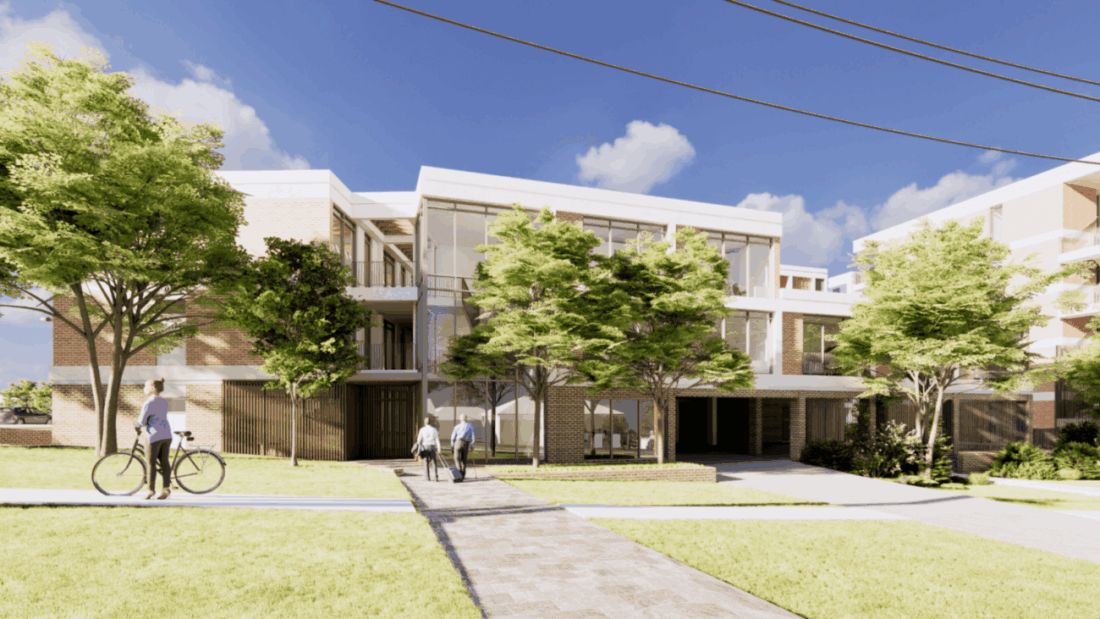
Article by Samuel Liu, Barr Planning
Housing unaffordability is generally described to be the problem which arises when housing costs consume too great a proportion of household income. Housing affordability on a global scale has deteriorated significantly in recent decades and its effects have been especially salient in the Australian housing market. The cost of housing in Australia currently sits at a price-income multiple of 7.7 with its five most populous capital cities being identified as ‘severely unaffordable’.
Sydney is currently considered Australia’s most unaffordable city having a price-income multiple of 11.8 .
In Australia, housing unaffordability is generally identified using the 30/40 rule. Housing unaffordability occurs when housing costs represent 30 percent (or more) of household income for those living in the bottom 40 percent of the income distribution spectrum.
Causes of housing unaffordability
Housing prices are informed by many supply-side and demand-side factors.
On the supply side, the availability of land, construction and infrastructure costs, property related taxes and planning policies all affect the scale of new housing delivery. On the demand side, household growth, real income growth, availability of housing finance, interest rates, home buyer incentives as well as returns on alternate investments all shape the demand for housing assets .
Housing unaffordability occurs when supply-side and demand-side factors produce house prices and rents beyond the reasonable purchasing power of prospective homeowners and tenants. Historic political discourse has suggested that the primary cause – and therefore primary solution – of housing unaffordability is associated with housing supply, however, some scholars (like Mulheirn in the UK) have demonstrated that undersupply of housing is not the cause of current affordability problems.
In the UK housing market, net dwelling additions have exceeded household growth over the last 20 years with residential floor area growth (25.7%) and total bedroom growth (19.5%) increasing at a faster rate than population growth (14.6%). Over this period, median incomes increased at faster rates than market rental prices. Market rents remained relatively stable and affordable and indicate that housing undersupply has not been the cause of house price inflation. Mulheirn asserts that demand-side factors have been the predominant cause for the housing price crisis, notably due to constrained access to housing finance for first home buyers, loss of housing benefits and slow wage growth.
Demand-side factors have also caused housing affordability problems in Australia.
Over the past decade, Australian house prices have increased by 36.5% despite surplus net housing additions which have grown at a faster rate (9.5%) than population growth (8.2%). This supports Mulheirn’s assertion that demand-side factors, rather than supply-side factors, are responsible for the current housing affordability problems.
Whilst demand-side factors contribute strongly to housing unaffordability, the outcomes of market delivery of new housing supply reveal why additional supply does not deliver significant price reductions. Data from 2005-2014 show that over 80 percent of new dwellings approved for construction in Australia were in the more expensive 6th to 9th price deciles. This trend is supported by data from the 1980s to early 2000s which showed that new housing supply was skewed towards the higher priced segments of the market. New housing supply delivered by the private sector is delivered to maximise profits and exacerbates housing affordability issues. This indicates that for supply-side solutions to be effective, government intervention is required to direct market supply of new housing in the lower-priced segment of the market.
Effects of housing unaffordability
The effects of housing unaffordability are wide ranging and affect the economy through impacts on stability, efficiency and equity. The economic effects of housing unaffordability are closely related to societal outcomes and need to be understood as consequences and results of each other.
Stability
High housing costs result in lower discretionary spending capacity of households. This has implications for Australia’s economic growth and stability as household consumption contributes approximately half of Australia’s total GDP. High housing costs can also reduce the competitive advantage of firms located in a particular region. This may curtail the economic benefits associated with localisation and urbanisation agglomeration economies as firms and their employees need to relocate further away from metropolitan centres due to housing costs.
Efficiency
Housing unaffordability also results in high levels of spatial dispersion due to housing prices adjusting to achieve locational equilibrium. As a result, persons with lower incomes are pushed to urban fringes where housing is more affordable. Spatial dispersion can create spatial mismatches between jobs and workers. In this scenario, lower-paid jobs in metropolitan centres cannot be adequately filled because suitable workforce is located too far away from places of employment. This creates labour market impediments and impacts on the efficiency of labour distribution reducing economic growth.
Equity
Spatial dispersion can lead to poorer health outcomes as families make trade-offs regarding where they live and suffer poorer access to employment, education and health service as a consequence. Spatial dispersion also reduces social cohesion as people live further away from places of work and play. Spatial dispersion also creates effects of spatial polarisation where people of low socio-economic background are concentrated on the urban fringe and are separated from high socio-economic areas reinforcing disparity and undermining a wider sense of citizenship.
Housing unaffordability can further reduce home ownership rates. This can result in intergenerational inequity between homeowners and those who cannot enter the market. This has the potential to create a two-class society of those who receive intergenerational wealth and have access to capital and opportunities and others that do not.
Supply-Side Solutions
As highlighted above, market delivery of new housing supply is typically provided at the upper price deciles. As such, government intervention is required to support the delivery of low-cost housing as the private sector is not capable of delivering this without incentives .
In 2017, the Australian Government established the Affordable Housing Bond Aggregator (AHBA) via the National Housing Finance and Investment Corporation (NHFIC). This initiative drew inspiration from the Austrian model of Housing Construction Convertible Bonds (HCCBs) issued to support affordable housing delivery in Austria, particularly in Vienna.
The AHBA acts as a financial intermediary and issues low interest, government backed social bonds to the wholesale capital market. The finance raised from these bonds is issued to Community Housing Providers (CHPs) to construct new social and affordable housing stock, maintain existing stock, provide wrap around services and refinance existing debts.
To date, AHBA has issued over $2 billion in social bonds to community housing providers and has secured savings of $420 million for CHPs attributed to lower interest rates and reduced transaction costs compared to traditional commercial loans. The initiative has supported 1,291 new CHP dwellings and 5,436 existing CHP dwellings since the commencement of the program.
Another supply-side solution implemented by the Australian Government has been the National Rental Affordability Scheme (NRAS). The scheme was introduced in 2008 and has been delivered in partnership with state and territory governments. The scheme subsidises eligible applicants who provide affordable housing dwellings at 80 percent or less of the market value rent to eligible low- moderate income households. Whilst federal funding for the scheme has now ceased, the scheme will conclude in 2026 having delivered 38,000 affordable dwellings with each dwelling have a tenure of a 10-years. The scheme has effectively delivered new affordable housing across all of the states and territories and has been the first large scale government directed incentive aimed at increasing private sector delivery of affordable housing in Australia.
Both the Commonwealth Government AHBA and the NRAS initiatives have been important supply- side interventions to direct market forces towards the delivery of housing for moderate to very low- income households. These government interventions have overcome the structural and financial impediments which have historically disincentivised the private sector from supplying affordable housing, namely the realisation of returns to adequately compensate for the perceived risk. These supply-side interventions, however, have focused on the delivery housing affordability in the rental market and have not addressed owner-occupier aspirations for home ownership. This is subsequently addressed in demand-side solutions to the housing affordability problem.
Demand-Side Solutions
Government backed demand-side solutions have not sought to ameliorate high house prices, but rather have sought to increase the home purchasing potential of first home buyers.
The First Home Loan Deposit Scheme (FHLDS) was introduced by the Australian Government in 2020 to provide mortgage assistance to first home buyers. Under the scheme, eligible participants are able to finance their first home purchase with a deposit of as little as 5 percent of the property value without incurring mortgage insurance costs. Under this scheme, the Australian Government guarantees participating lenders up to 15 percent of the property value.
The Australian Government has made 20,000 FHLDS places available to date and will continue to make another 10,000 places available each financial year. The scheme is restricted to singles who earn less than $125,000 per year and to couples who earn less than $200,000 per year. The FHLDS is only available for newly constructed dwellings and cannot be used for existing homes. Whilst the FHLDS is a demand-side benefit, the increased demand for housing created by the FHLDS has supported the construction of new homes.
The scheme has supported one in eight first home buyers to date. Mortgage guarantees have been concentrated in the 25-34 age bracket with single applicants typically earning between $60,000 -$80,000 per year and couples typically earning between $90,000 – $125,000 per year. These income levels have been well below the scheme eligibility income thresholds of $125,000 and $200,000 per year for singles and couples respectively. This suggests that the scheme has provided measurable benefit and a means tested incentive in the first home owner market segment. Additionally, the scheme has supported home ownership of key workers such as teachers, nurses and police officers who have comprised one in six of the guarantees issued to date. The scheme has effectively expedited home ownership for first home buyers who would have otherwise had to delay home ownership by four years to save the 20 percent deposit.
A further demand-side solution introduced by the Australian Government in 2020 was the HomeBuilder Grant. The grant, which has now concluded, supported other demand-side initiatives such as the FHLDS, the First Home Buyer Assistance Scheme and First Home Owner (New Homes) Grant. Under the initiative, eligible owner-occupiers were offered up to $25,000 to substantially renovate an existing home or buy an off the plan home or new home. Eligibility for the grant was means tested with the same maximum income thresholds as the FHLDS.
The HomeBuilder Grant has provided first home buyers with additional finance to support home ownership aspirations. Its effectiveness in creating new home ownership was shown the rise in private sector house approvals which increased to their highest levels in December 2020, reaching 13,638 approvals. Loan commitments for owner-occupied dwellings correspondingly increased to their highest levels in a decade in January 2021.
Whilst the HomeBuilder Grant was successful in supporting increased first home ownership for Australians, it is evident that the increased demand for construction services actually had the effect of making prices for new homes more expensive for first home buyers which has consequently exacerbated housing affordability issues in the short term.
Conclusion
Housing unaffordability remains a salient issue in Australia. It is the product of a complex interplay of supply and demand factors. Continued government interventions are required to overcome structural and financial impediments to private sector delivery of low-cost housing for those in need. Whilst government backed demand-side solutions have assisted in increasing first home ownership, incentives should be carefully considered to ensure existing housing affordability issues are not exacerbated.
Samuel Liu, Barr Planning



